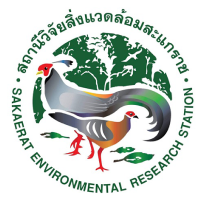Keywords :
Acacia auriculiformis; Land Degradation and Rehabilitation; Savanna; Soil Dehydrogenase; Soil
Moisture
บทคัดย่อ :
Soil dehydrogenase activity is a good indicator of overall microbial activity in soil, and it can serve as a good indicator of soil condition. However, seasonal changes in soil moisture content may have an effect on soil dehydrogenase activity, making an accurate assessment of soil condition difficult. In this study, we attempted to determine the significance of soil dehydrogenase activity for assessing soil condition, and we attempted to find a way to account for the influence of soil moisture content on soil dehydrogenase activity. Soils were
sampled in dry evergreen forest (original vegetation), bare ground (severely degraded) and Acacia plantation
plots established on bare ground in 1986 and 1987 in Sakaerat, Thailand. Soil physico-chemical characteristics
and dehydrogenase activity in the Acacia plantation soil had few differences from those in the evergreen forest
soil. Soil dehydrogenase activity varied significantly between the bare ground and the forests regardless of the
season (wet or dry), while the season did not produce a significant variation in soil dehydrogenase activity, as
determined by repeated measures analysis of variance (p=0.077). The physico-chemical data provided the first
principal component as a good measure of soil fertility. Values of soil dehydrogenase activity significantly correlated
to scores of the soil samples of the first principal component (R=0.787, p<0.001). We found that soil
dehydrogenase activity is a useful indicator of the extent of soil degradation and the rehabilitative effects of
reforestation in this part of Thailand
เอกสารอ้างอิง :
Doi & Ranamukhaarachchi (2009) Soil dehydrogenase in a land degradation-rehabilitation gradient: observations from a savanna site with a wet/dry seasonal cycle. Rev. Biol. Trop. (Int. J. Trop. Biol. ISSN-0034-7744) Vol. 57 (1-2): 223-234, March-June 2009



